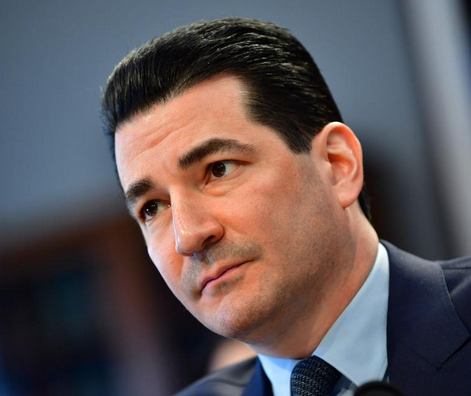 In the 25 years since Congress passed the Dietary Supplement Health and Education Act (DSHEA), the supplement industry has grown from cottage industry to multi-billion dollar global business.
In the 25 years since Congress passed the Dietary Supplement Health and Education Act (DSHEA), the supplement industry has grown from cottage industry to multi-billion dollar global business.
Recent estimates put total worldwide sales of vitamins, minerals, proteins, amino acids, and herbal medicines at $124.8 billion in 2018, with a projected growth to $210 billion by 2026.
The North American market is by far the largest. Supplement sales in the US hit $42.6 billion last year, according to the research firm, Reports and Data.
The already burgeoning natural products sector has been turbocharged in recent years by consumer demand for cannabidiol (CBD) and other cannabis-derived products. In 2018, US CBD sales were estimated to be $390 million. But that was before passage of the Farm Bill legalizing cultivation of low-THC industrial hemp (a major source of CBD), and the decriminalization of hemp by the Drug Enforcement Agency. Industry-watchers project that CBD sales could scale to $20 billion by 2022.
Surging Sales, Straggling Regs
Rapid industry growth, the introduction of new ingredients, the globalization of the raw materials supply chain, the widespread use of genetically-modified ingredients, the emergence of ingredients produced via synthetic biology, and the growing threat of economically-motivated product adulteration are combining to challenge DSHEA in ways its original framers could not have envisioned.
An historic piece of legislation in its time, DSHEA essentially defined the concept of a “dietary supplement,” and in the process gave a formal identity to what had until then been a fragmented field—albeit a very popular one. Contrary to the oft-sung refrain that “supplements are unregulated,” DSHEA laid out a clear framework for oversight.
Under DSHEA, the federal government defined:
- Clear roles and discretionary authority for the Food & Drug Administration (FDA) and the Federal Trade Commission (FTC): FDA regulates manufacturing standards, quality assurance, permissible ingredients, product claims language, and scientific validation; FTC presides over truthfulness in advertising and marketing.
- Good Manufacturing Practices (GMPs): DSHEA includes guidelines and standards for everything from production procedures through management of consumer complaints.
- Pathway for New Dietary Ingredients: Companies wishing to introduce a new ingredient or novel combination must first notify the FDA, which has 75 days to review the ingredient(s) and determine safety.
- Labeling Requirements: The law defines rules for supplement labels, which must include a “Supplement Facts” panel detailing key ingredients, net quantity, serving size, manufacturer contact info, and a standardized disclaimer stating the product is not intended for prevention or treatment of disease.
- Rules for Permissible Product Claims: DSHEA clearly prohibits claims stating or implying that supplements can prevent or treat diseases, but permits—and actually encourages—Structure/Function claims describing these products in terms of how they support the health of specific organs or physiological processes.
- Requirements for Adverse Event Reporting: Though enforcement is spotty at best, the FDA does require supplement companies to report serious adverse events. It also stipulates criminal penalties for submission of false or misleading reports.
There’s no question DSHEA was a compromise—some would say a devil’s bargain. It permitted the then-young industry to legally advertise, while maintaining an inviolable line between supplements and pharmaceuticals by restricting the use of disease-based, symptom-oriented language that consumers and practitioners understand.
Movement Toward Revision
Former FDA Commissioner, Scott Gottlieb, who resigned in March
But by and large, DSHEA has stood unchanged for more than two decades. Within its bounds, the dietary supplement and natural product industries have thrived. Despite grumbling from all corners, there have been no major steps toward revising it.
Until this year.
February, shortly before his resignation, then FDA Commissioner Scott Gottlieb announced the agency’s intention to “strengthen regulation of dietary supplements by modernizing and reforming FDAs oversight.”
He stressed that, “What was once a $4 billion industry comprised of about 4,000 unique products, is now an industry worth more than $40 billion, with more than 50,000 – and possibly as many as 80,000 or even more – different products available to consumers.”
While most companies act responsibly and ethically, Gottlieb held that the current regulations leave holes, “for bad actors to exploit the halo created by quality work of legitimate manufacturers to instead distribute and sell dangerous products that put consumers at risk. As the popularity of supplements has grown, so have the number of entities marketing potentially dangerous products or making unproven or misleading claims about the health benefits they may deliver.”
“DSHEA was deliberately crafted to establish a careful balance of protecting consumers’ right to access safe products, while preserving FDA’s authority to protect those same consumers against unsafe products. While the fundamental goals underlying DSHEA have not changed, the challenge of realizing those goals has grown far beyond what it once was.” —Norman “Ned” Sharpless, MD, Acting Commissioner, FDA
The announcement represents the first time in a generation that the agency has signaled an intention to revisit or revise DSHEA. It heralded a volley of FDA warning letters to companies making unapproved claims about cancer, diabetes, Alzheimer’s disease, and other serious disorders.
Simultaneously, the FDA announced its intention to create a new regulatory framework for hemp-derived CBD and other cannabis-related substances (See Regulatory Confusion Reigns as FDA Grapples with CBD).
The 2018 Farm Bill, along with the FDA’s approval of Epidiolex, and the DEA’s re-scheduling of hemp have combined to create a chaotic and confusing landscape in which federal and state laws often clash, questionable products have flooded the market, and responsible companies struggle to comply with conflicting demands.
In March, Gottlieb resigned as commissioner. The move was unexpected and did not appear to be forced or politically motivated. Gottlieb is on record stating that while he loved his job at the FDA, it was taking a serious toll on his family life.
In the wake of his departure, it became clear that the intention to review and possibly revise DHSEA is agency-wide; it was not simply the pet project of a single commissioner.
Norman "Ned" Sharpless, MD, Acting FDA Commissioner
He added that FDA will, “continue our efforts to modernize and reform our oversight of dietary supplements.”
On May 16, FDA held its first day-long public hearing about revising supplement regulations. The meeting included speakers from all major supplement industry trade organizations, as well as representatives of academic medicine, regulatory agencies, consumer advocacy groups, and law firms involved in the nutrition field.
In his opening remarks, Sharpless stated: “DSHEA was deliberately crafted to establish a careful balance of protecting consumers’ right to access safe products and accurate information, while preserving FDA’s authority to protect those same consumers against unsafe and otherwise unlawful products. While the fundamental goals underlying DSHEA have not changed, the challenge of realizing those goals has grown to a magnitude far beyond what it once was.”
He said FDA has “established an agency-wide dietary supplement working group that is looking into our dietary supplement organizational structures, processes, practices, and procedures, and identifying where we can make improvements.”
Incremental Changes
Few in the industry expect major changes to DSHEA in the near future. The political process for such moves would be long and complicated under the best of circumstances. Under the prevailing conditions in Washington, and on the threshold of an undoubtedly contentious campaign year, big moves are very unlikely.
That said, the FDA did announce some significant regulatory steps:
- Creation of the Dietary Supplement Ingredient Advisory List: a public-facing tab on potentially dangerous or unlawful ingredients detected in products marketed as supplements. “If an ingredient might be unlawful, consumers need to know so they can avoid using products with that ingredient. And responsible industry participants need to know as well, so they can avoid selling them,” said Sharpless.
- Formation of a Botanical Safety Consortium: an assembly of academic researchers, herbal product manufacturers, botanists, chemists, and toxicologists who will meet regularly with the FDA to evaluate safety of herbal compounds in supplements, and to develop or improve analytical and toxological methods.
- Possible Mandate for a Centralized Product Registry: Under the current form of DSHEA, the FDA is not clearly authorized to require manufacturers to register and list all their products with the agency. Former commissioner Gottlieb had called for an amendment to DSHEA that would mandate such a central registry. Dr. Sharpless supports this move, stating that a comprehensive centralized registry would enable to respond more decisively: If the agency learned that an ingredient was dangerous, it could quickly identify all listed supplements that contain it and issue consumer warnings or mandate product recalls.
If a “DHSEA 2.0” eventually does emerge from the federal government, will it be more restrictive or expansive? It’s a question that many in the supplement industry have raised.
Todd Harrison, a regulatory attorney who specializes in nutrition industry issues, believes that the current hearings are opening “a window of opportunity for a more expansive regulatory regime that allows greater innovation from industry.”
Harrison, a partner with Venable LLP, sees opportunities for widening the scope of permitted dietary ingredients; improving boundaries for innovation; allowing supplements to be covered by flexible spending accounts, and finalizing a list of “grandfathered” pre-DSHEA dietary ingredients that are considered permissible for commerce.
At the same time, he believes that revisions of DHSEA, will likely strengthen FDA’s ability to take action on:
- Egregious disease claims (e.g., cancer, HIV/AIDS, opioid addiction, chronic pain, Alzheimer’s and other cognitive decline conditions)
- Supplements containing CBD not derived from hemp
- Supplements containing ingredients FDA considers unsafe or to fall outside the current definition of dietary supplement
Regarding elimination of unlawful and potentially unsafe ingredients, Harrison says the FDA’s new Ingredient Advisory List is a step in that direction.
Ingredients Under Scrutiny
This list is for compounds that are not currently recognized as legal dietary ingredients, approved food additives, or substances generally recognized as safe (GRAS); and novel compounds that have not been submitted for pre-market notification as New Dietary Ingredients.
Harrison stressed that an ingredient’s appearance on this list does not mean that the ingredient has been proven unsafe, or that the FDA has made a formal safety assessment. It simply means that the agency has concerns and is undertaking an evaluation.
Among the first wave of ingredients on the list are:
- Andarine: a selective androgen receptor modulator sold in some muscle-building formulas.
- Higenamine: a naturally-occurring compound in aconite, lotus seed, and other herbs used in traditional Asian medicine. Marketed as a weight loss and performance aid, this compound is a β2 agonist and is prohibited by the World Anti-Doping Agency.
- Hordenine: a phenethylamine compound found in many plants including barley, sorghum, and millet, and promoted as a “metabolic enhancer” for weight loss.
- 1,4-Dimethylamylamine (DMAA): an experimental stimulant sold widely in sports performance and body-building formulas.
Phenibut: Though not (yet) on the Ingredient Advisory List, this GABA analog is under heavy FDA scrutiny, according to Harrison. The compound is promoted as a “nootropic” cognitive enhancer by a number of supplement companies. Originally developed as an anti-anxiety drug in the Soviet Union decades ago, phenibut is a central nervous system depressant that has paradoxical stimulant effects as well. At low concentrations, it increases dopamine levels which appears to increase focus and concentration.
Phenibut is not an FDA approved drug in the US, nor is it a recognized dietary ingredient. A number of researchers have raised concerns about addiction. Kratom (Mitragyna speciosa)
The FDA recently issued three warning letters to companies marketing phenibut in supplements. The letters stressed that phenibut is not a legal dietary ingredient, and that “dietary supplements” containing phenibut are misbranded. Harrison says this is the first time FDA has issued warning letters solely on the basis of an ingredient’s status, and not citing other violations. “It signals FDA’s new focus on new ingredients.”
Kratom (Mitragyna speciosa): Native to southeast Asia, this plant produces compounds that bind to opioid receptors. Advocates say it is a non-addictive alternative to prescription pain killers and heroin. But critics say it can be just as addictive, and further, that many products marketed as “kratom” are spiked or adulterated.
Over the course of the last 12 months, the FDA has seized multiple shipments of kratom and kratom-containing products, and is urging medical professionals to report any possible kratom-related adverse effects to the MedWatch database.
Vinpocetine: In June, the FDA issued a warning about potential reproductive system effects associated with vinpocetine, a synthetic analog of a naturally occurring alkaloid in Vinca minor (Periwinkle). Frequently labeled as “vinca extract,” vinpocetine is a common ingredient in supplements sold for memory enhancement, mental focus and visual acuity.
Vinca minor (Periwinkle)
The findings, though based solely on animal studies, were enough for FDA to issue a categorical statement advising pregnant women or those likely to become pregnant to avoid taking vinpocetine. The message to supplement companies? Ensure that vinpocetine products are labeled with safety warnings against use by pregnant women.
Homeopathics in Limbo
Though they are sold in the same retail aisles as vitamins, herbs, and other supplements, homeopathics are definitely not supplements from a regulatory perspective.
Under the Food, Drug, and Cosmetic (FDC) Act of 1938, a law passed long before “dietary supplement” was even a concept, substances listed in the Homeopathic Pharmacopeia of the United States (HPUS) were defined as a distinct category of drugs.
That’s been the regulatory status of the grandfathered ingredients ever since. Homeopathics are not governed by DSHEA, and for decades marketers could make disease treatment claims—provided there is precedent for the claims in the HPUS or the historical homeopathic literature.
Homeopathics do, however, fall under the jurisdiction of both the FDA and the FTC. In recent years, both agencies have taken steps to revamp these very old regulations on what many perceive as archaic, unscientific products and practices.
According to the FDA, “a drug, including a homeopathic drug, is considered a “new drug” if it is not generally recognized as safe and effective (GRAS/E) by qualified experts for use under the conditions prescribed, recommended, or suggested in the labeling. FDA makes GRAS/E determinations for OTC drugs marketed under the OTC Drug Review. The FDA has not reviewed any drug products labeled as homeopathic under the OTC Drug Review, because the Agency categorized these products as a separate category and deferred consideration of them.”
Putting it simply, the FDA is saying that homeopathic ingredients deemed acceptable drugs in the era when nearly all were produced by independent compounding pharmacists, do not pass muster as approved drugs in today’s era of industrial mass production, when homeopathy has become a $3 billion OTC industry.
Late in 2017, the FDA issued a document called Drug Products Labeled as Homeopathic: Guidance for FDA Staff and Industry, outlining a new “risk-based enforcement” policy that recategorizes homeopathic drugs as “unapproved new drugs” subject to the agency’s enforcement discretion.
The FDA also rescinded its 1995 Compliance Policy Guide (CPG) 400.400, Conditions Under Which Homeopathic Drugs May Be Marketed, which, the agency says, unwittingly facilitated the marketing of prescription and non-prescription drugs, as well as non-recognized dietary ingredients unlawfully labeled as “homeopathic.”
“There are no homeopathic drug products marketed in the United States that are FDA-approved. This means that FDA has not evaluated them for safety or effectiveness. Thus, such products may not meet modern standards for safety, effectiveness, and quality,” the agency said in a statement last year.
Drug Products Labeled as Homeopathic lays out the criteria likely to trigger agency action:
- Products that contain or claim to contain ingredients associated with potentially significant safety concerns;
- Products with reported safety concerns;
- Products for routes of administration other than oral and topical;
- Products marketed for the prevention or treatment of serious and/or life-threatening diseases and conditions;
- Products targeting vulnerable populations;
- Products that do not meet standards of quality, strength, or purity as required under the law.
Homeopathy is also under FTC scrutiny. In 2016, the commission announced a plan to hold homeopathic efficacy and safety claims to the same scientific standards as apply to OTC drugs: the claims must be supported by credible and reliable scientific evidence.
Given that homeopathic claims are often based on historical theory, traditional use, and anecdote, many homeopathic marketing pitches would fit the FTC’s definition of “misleading.”
But enforcement resources are limited, and both the FDA and the FTC must choose their battles carefully. Though they now have broad discretionary authority to go after homeopathic products, so far neither authority has taken major regulatory actions.
And in a small but significant victory for homeopathy, in November 2018, the 9th Circuit Court ruled in favor of Boiron—one of the world’s biggest homeopathic companies—in a deceptive advertising class action suit.
The plaintiffs claimed that Oscillococcinum—the company’s flagship flu relief product—was nothing but “water sprayed on sugar” and could not possibly deliver any flu relief. After a weeklong trial, Boiron presented sufficient scientific data to convince a jury and the 9th circuit judges that the Oscillo claims were “not false.”
All of the aforementioned regulatory issues are significant, but they shrink in comparison with the challenge posed by non-prescription CBD and other hemp-derived substances.
In many ways, the CBD situation embodies all of the conflicting imperatives, tricky compromises, and technical shortfalls that have confounded the natural products industry—and its regulators—since the inception of DSHEA.
How the FDA and other federal agencies ultimately resolve the CBD issue will tell us a lot about how they are likely to regulate the entire supplement industry going forward.
END







